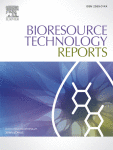In this study, aerobic or anaerobic biological treatment of streams collected from different units of industrial wastewater treatment plant (WWTP) was studied in a series of batch tests. Under aerobic condition, the removal efficiencies of COD, NH4+-N and TP were 57.7%, 83.8% and 100% for influent of WWTP (IN), 64.4%, 61.3% and 100% for effluent of secondary sedimentation tank (EN-SST), and 2.3%, 64.3% and 10.6% for effluent of advanced oxidation tank (EN-AOT). Meanwhile, the removal efficiencies of COD, NH4+-N, TOC were above 30% under anaerobic conditions. The GC–MS analysis showed a presence of 59 kinds of chemicals in IN, 28 in EN-SST, and 8 in EN-AOT. The main organic compounds were long-chain alkanes and derivatives. After aerobic/anaerobic biological treatment, the abundance of Proteobacteria, Bacteroidota, Nitrospirota was 40.4–56.1% (IN), 5.3–17.5% (EN-SST), and 4.6–13.4% (EN-AOT), respectively. This work contributed to deeply understanding the biotransformation mechanisms of refractory pollutants in industrial wastewaters.


